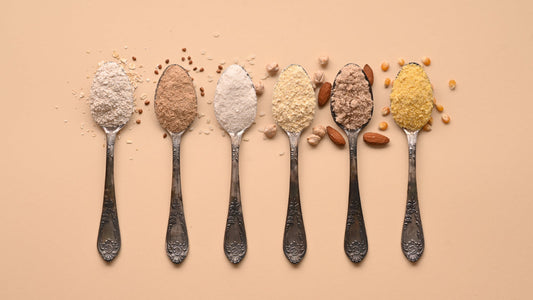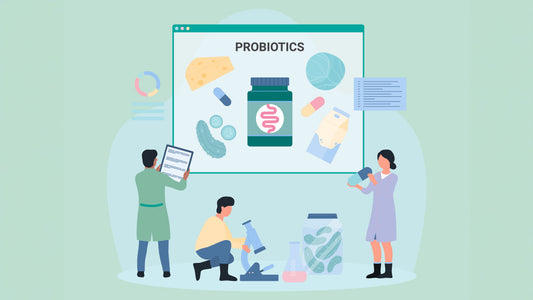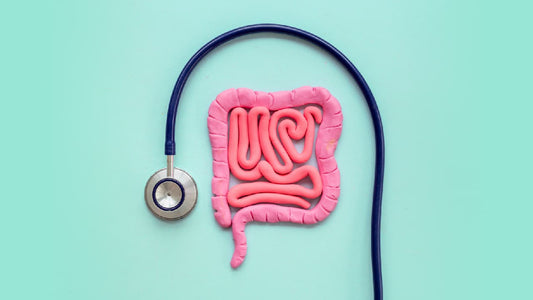Gut health is very ‘in vogue’ at the moment. For good reason.
Because recently there has been a wide range of scientific research linking the state of our gut to all manner of illness, disease and even fat loss.
In this article we are going to discuss:
- Why the gut is important
- What a healthy gut looks like
- The links between our gut health and obesity
- What this means for the way that we eat
- Why there appears to be a link between a healthy gut and loss of body fat.
What is the Gut?
When people refer to the gut health, they are referring to the part of our gastrointestinal tract called the large intestine. Also known as the colon. This is the final stage of digestion, where waste is stored and water is reabsorbed back into the body.
As well as being a part of digestion, it also plays host to millions of bacteria. These bacteria are not just using us for their own gain, they play important roles in our health. And there has been an increasing focus on how these bacteria - and the compounds they produce - interact with our bodies in ways that may affect our entire organism.
The bacteria and other microorganisms in our gut are collectively called our gut microbiota - and make up our gut microbiome. This ‘symbiotic’ relationship has developed over millions of years and means we now hold as many, if not more bacterial cells in our gut than we have human cells.
How gut bacteria helps
These gut bacteria give us a helping hand in numerous different ways. They help make our gut lining stronger so it is less prone to ‘leaking’ - helping to keep pathogens and other nasties out of our bodies.
Drawing energy from food that we might miss in our small intestine (where most of our digestion takes place). Helping to provide fuel for our intestinal cells and immune system.
Of the millions of individual bacteria present in our gut, most (~93%) are made up of 5 main phyla (phyla being a grouping together of similar organisms). A vast majority of these (~90%) are made up of bacteroidetes and firmicutes, with actinobacteria, proteobacteria and verrucomicrobia making up the other 10%.
Types of bacteria
As a point of clarity, using firmicutes as an example of bacteria is the equivalent of humans being classified as ‘chordata’ animals with a spinal cord!
The subcategories of animals with spines are VAST, so to get to the level of humans we have to be further classified by several different identifiable criteria until we get to ‘us’.
This means when we say firmicutes or other bacteria, we are actually talking about an umbrella term that covers a wide range of distinct individual bacteria - with their own genetics, functions and effects on the body. In fact, firmicutes include over 200 different individual types of bacteria!
What does a healthy gut look like?

Considering the roles that these bacteria play, it is unsurprising that researchers, nutritionists and health & fitness specialists have become increasingly interested in what a healthy gut looks like. And whether it can be manipulated in order to promote health and even fat loss.
Our microbiome ‘diversity’ increases rapidly from the moment we are born. By the age of three our guts are going to resemble something very close to our adult form. However, life can throw us a few curve balls. For example, a change of eating habits, exercise and older age can all have an impact on how our microbiome looks.
By mapping different populations, The Human Microbiome Project has identified distinct country specific microbiome signatures in gut bacteria. Demonstrating that it is heavily influenced by our diet, environment and possibly genetics.
Types of gut bacteria
Despite these differences in species across different populations, it has been suggested that the actual roles of these species may be similar. This is because the fuels available to gut bacteria and the overall environment can only facilitate certain ‘biochemical niches’, so the types of bacteria and their genetic traits are likely to be somewhat limited.
Dietary fibre is often touted to be good for feeding our gut bacteria. However, our gut bacteria can feed on some forms of carbohydrates that might not typically be considered fibre. So a broader term that encompasses the carbohydrates that gut bacteria can feed on is ‘microbiota-accessible carbohydrates’ (MAC).
Diets low in MAC tend to produce a microbiome that is lower in certain types of bacteria and have less bacterial diversity. Key bacteria are vital for the creation of short chain fatty acids (SCFA) - important fuel for our bodies, helping support overall health and well-being.
For the production of the vitamin folate (B9), bifidobacteria are key players on our behalf as we can’t synthesize this in our bodies. Other vitamins produced by a number of gut bacteria include vitamin K, biotin (B7), riboflavin (B2) and several others.
The two main factors in bacterial health
Bacteria such as strains of bifidobacterium and lactobacillus are often stated as being particularly beneficial for our health and are often present in supplements.
Because there are big variations in gut bacteria populations between different people, it is a challenging to measure exactly how gut bacteria is influenced by changes in food intake and illness. Making it difficult to determine what a healthy gut actually looks like.
However, the two main factors that seem to be associated with health are bacterial ‘richness and diversity’..
Richness relates to the total amount of bacteria regardless of species.
Diversity means the number of different individual bacterial species.
What are the links between gut health and being overweight?
We know that diet affects the ‘look’ of our gut!
We also know that changes in our gut bacteria do not necessarily have a clear relationship with body fat levels. Largely due to how quickly alterations in diet can affect our bacterial profile.
However, there does appear to be some links between the diversity of gut bacteria in lean and overweight people. Demonstrating different bacterial populations, but not necessarily diversity.
So, do these bacterial differences directly influence weight gain? Or is this simply a result of the types of diets that overweight people tend to eat - i.e. low in fibre and nutrient quality?
The link between the gut and the brain
To answer this question would require defining clear pathways that link our gut to gaining weight.
At present, it appears the most likely ‘mechanism’ by which our gut could directly influence weight gain would be through alterations to the ‘gut-brain axis’. Possibly through direct signalling molecules. Or alterations in the production of saturated fatty acids (SFAs), that may affect appetite regulation potentially causing people to overeat.
In animal models, it has been shown that changing the composition of gut bacteria - independent of changes in energy intake - can influence weight regulation. And also the development of other metabolic diseases linked to being overweight - both directly (obesity is a big risk factor for diabetes, cancer, heart disease etc) and indirectly through changes in metabolism.
The link between gut bacteria and weight gain
It does appear then that there is a link between gut bacteria and weight gain, at least in animals. Reflecting more than simple association with overeating and poor diet choice.
Other candidates for regulating food intake are specialist ‘neurons’ that connect our gut to our brains and other cells that support the function of these neurons (called enteric glial cells). These also appear to be links to changes in bacteria impacting these cells, which either directly or indirectly affect signals from our gut to our brains.
SFAs are also linked to the function of these cells, demonstrating the complexity of the feedback mechanisms between our gut, brain and the pathways in between.
Is there any evidence that changing the health of our gut can cause fat loss?

As suggested above, there are several animal studies in both rats and mice that show changes the gut microbiome can impact on weight regulation. These studies include the use of prebiotic supplements and transplants of gut bacteria between animals.
The first solid evidence of the direct impact of the gut microbiome influencing weight was only discovered in the last 15 years and since then research has yet to discover the exact mechanisms by how this takes place.
Since that initial discovery, most of the research has shown that the impact of gut microbiota on weight gain is only like to be moderate in its effects. Accounting for around 10-20% of weight gain differences in mice during overfeeding after transplanting the gut bacteria of lean or obese mice.
Evidence in humans is still lacking. And we really do not know - even in animal models - exactly what it is about these changes in gut microbiota that drives these changes.
Practical recommendations for a healthy gut - and fat loss
Although there are several supplements that are supposed to support a healthy gut, the current evidence suggests that a high fibre diet is probably still the best approach.
There is some evidence that foods and supplements containing bacterial strains (probiotics) can help support our gut in some situations. But the evidence is far from clear and often conflicting. So at present there are no clear connections that link probiotics to fat loss.
There are several diets that aim to significantly improve gut microbial diversity and health. And the 'low FODMAP' diet has been used with limited success in conditions like IBS. But there is little evidence to support the many diets that promise increased gut health benefits, beyond merely consuming an adequate amount of fibre.
From a purely fat loss perspective, we know that diets containing lots of fibre are likely to be beneficial. This is independent of any positive changes in gut bacteria - that may have wider reaching impacts in food intake regulation.
The reason fibre is great for fat loss? High fibre foods tend to be very filling and relatively low calorie, compared to their more refined counterparts. Helping to control hunger and calorie intake.
References
- The gut microbiota at the intersection of diet and human health Christopher L. Gentile and Tiffany L. Weir, , Science 362, 776–780 (2018)
- Introduction to the human gut microbiota Elizabeth Thursby and Nathalie Juge Biochemical Journal (2017) 474 1823–1836
- Prebiotics and synbiotics: Dietary strategies for improving gut health (2016). Faculty Publications in Food Science and Technology. 232.
- Influence of diet on the gut microbiome and implications for human health. Singh et al. J Transl Med (2017) 15:73
- Exercise and the gut microbiome: a review of the evidence, potential mechanisms, and implications for human health Mailing et al. Exercise and Sport Sciences Reviews,
- The Gut Microbiome Profile in Obesity: A Systematic Review International Journal of Endocrinology / 2018 /
- Gut Microbes and Health: A Focus on the Mechanisms Linking Microbes, Obesity, and Related Disorders Marialetizia Rastelli1,2,3, Claude Knauf2,3,4,5, and Patrice D. Cani Obesity (2018) 26, 792-800.
















